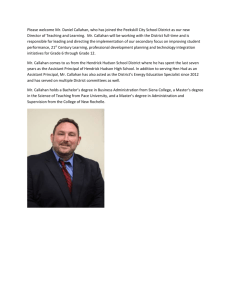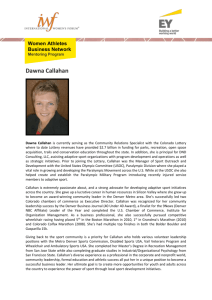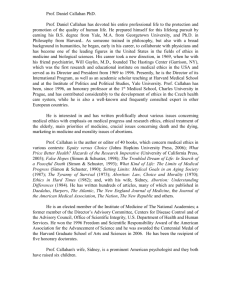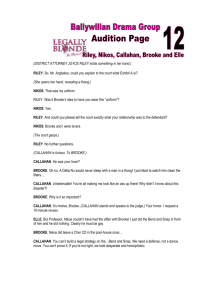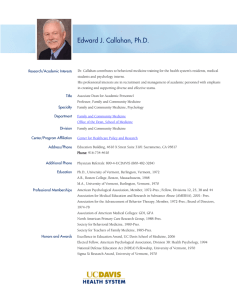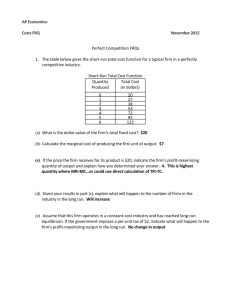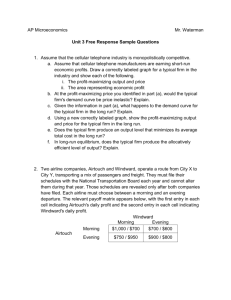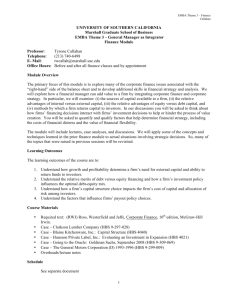Where Do Smith Engineering Alums Go?
advertisement
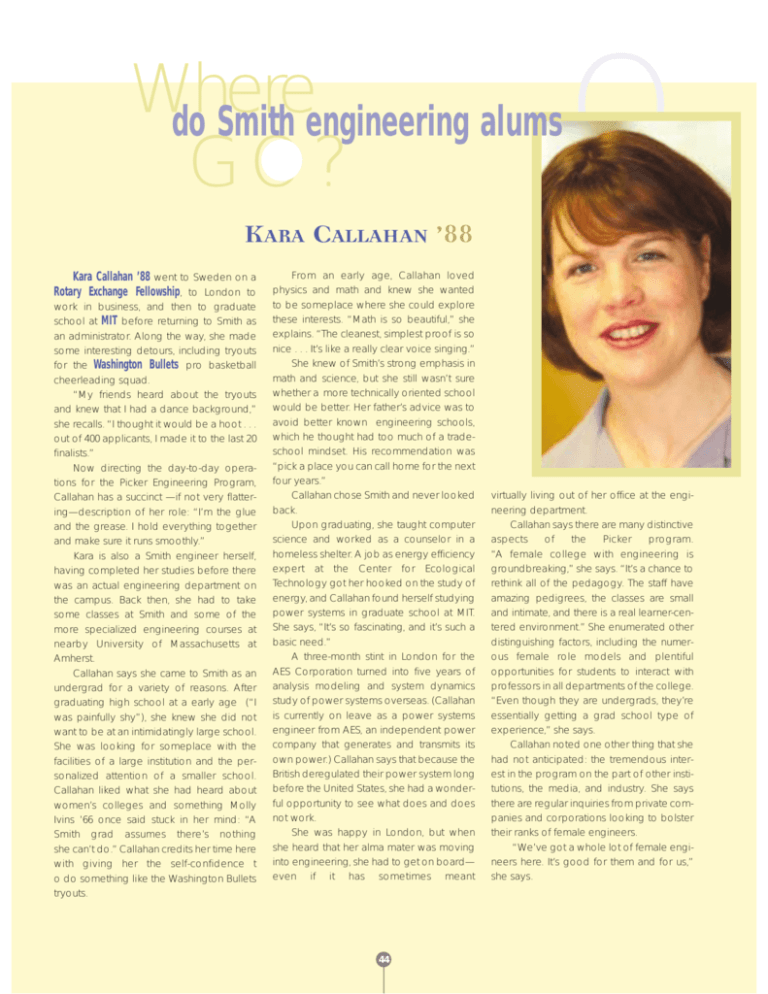
Where do Smith engineering alums GO? O KARA CALLAHAN ’88 Kara Callahan ’88 went to Sweden on a Rotary Exchange Fellowship, to London to work in business, and then to graduate school at MIT before returning to Smith as an administrator. Along the way, she made some interesting detours, including tryouts for the Washington Bullets pro basketball cheerleading squad. “My friends heard about the tryouts and knew that I had a dance background,” she recalls. “I thought it would be a hoot . . . out of 400 applicants, I made it to the last 20 finalists.” Now directing the day-to-day operations for the Picker Engineering Program, Callahan has a succinct —if not very flattering—description of her role: “I’m the glue From an early age, Callahan loved physics and math and knew she wanted to be someplace where she could explore these interests. “Math is so beautiful,” she explains. “The cleanest, simplest proof is so nice . . . It’s like a really clear voice singing.” She knew of Smith’s strong emphasis in math and science, but she still wasn’t sure whether a more technically oriented school would be better. Her father’s advice was to avoid better known engineering schools, which he thought had too much of a tradeschool mindset. His recommendation was “pick a place you can call home for the next four years.” Callahan chose Smith and never looked back. Upon graduating, she taught computer science and worked as a counselor in a homeless shelter. A job as energy efficiency virtually living out of her office at the engineering department. Callahan says there are many distinctive aspects of the Picker program. “A female college with engineering is expert at the Center for Ecological Technology got her hooked on the study of groundbreaking,” she says. “It’s a chance to rethink all of the pedagogy. The staff have the campus. Back then, she had to take some classes at Smith and some of the more specialized engineering courses at nearby University of Massachusetts at Amherst. Callahan says she came to Smith as an undergrad for a variety of reasons. After graduating high school at a early age (“I energy, and Callahan found herself studying power systems in graduate school at MIT. She says, “It’s so fascinating, and it’s such a basic need.” A three-month stint in London for the AES Corporation turned into five years of analysis modeling and system dynamics study of power systems overseas. (Callahan amazing pedigrees, the classes are small and intimate, and there is a real learner-centered environment.” She enumerated other distinguishing factors, including the numerous female role models and plentiful opportunities for students to interact with professors in all departments of the college. “Even though they are undergrads, they’re was painfully shy”), she knew she did not want to be at an intimidatingly large school. is currently on leave as a power systems engineer from AES, an independent power essentially getting a grad school type of experience,” she says. She was looking for someplace with the facilities of a large institution and the per- company that generates and transmits its own power.) Callahan says that because the British deregulated their power system long before the United States, she had a wonderful opportunity to see what does and does Callahan noted one other thing that she had not anticipated: the tremendous interest in the program on the part of other institutions, the media, and industry. She says there are regular inquiries from private com- not work. She was happy in London, but when panies and corporations looking to bolster their ranks of female engineers. she can’t do.” Callahan credits her time here with giving her the self-confidence t she heard that her alma mater was moving into engineering, she had to get on board— “We’ve got a whole lot of female engineers here. It’s good for them and for us,” o do something like the Washington Bullets tryouts. even she says. and the grease. I hold everything together and make sure it runs smoothly.” Kara is also a Smith engineer herself, having completed her studies before there was an actual engineering department on sonalized attention of a smaller school. Callahan liked what she had heard about women’s colleges and something Molly Ivins ’66 once said stuck in her mind: “A Smith grad assumes there’s nothing if it has sometimes 44 meant
